
Spurtle's David Sterratt has been asking why Edinburgh's new trams keep getting stuck on Princes Street. Those in the know were only too glad to explain.
Although I wasn’t convinced in 2007 that Edinburgh should have trams (for the record, I waged a minor campaign to look at the argument for trolleybuses), now that they're here, I have to confess that the ride is lovely.
They feel like a high-quality form of public transport, and I’d like to see the line extended to Leith (though with the disruption on Leith Walk better managed than last time). However, there does seem to be a fly in the ointment: the speed of the journey in town.
Princes Street–St Andrew Square delays
On my cycle to and from work, I’ve noticed long delays for trams travelling from Princes Street to St Andrew Square at the morning and evening rush hours – on one occasion I timed a tram taking 11 minutes to cover the distance between the two stops. (Yes, I should get out more, or at least out of Princes St.) Given that one of the advantages of the trams was supposed to be their speed, facilitated by traffic priority signals, I've been wondering how this delay could have arisen and what's being done about it.
To try to find out, I made enquiries with Edinburgh Trams and the council via Twitter and Council Leader 'Andrew Burns’ Really Bad Blog'. I have been very pleasantly surprised by the open, transparent and detailed responses received from Andrew Burns and Council officials. In summary:
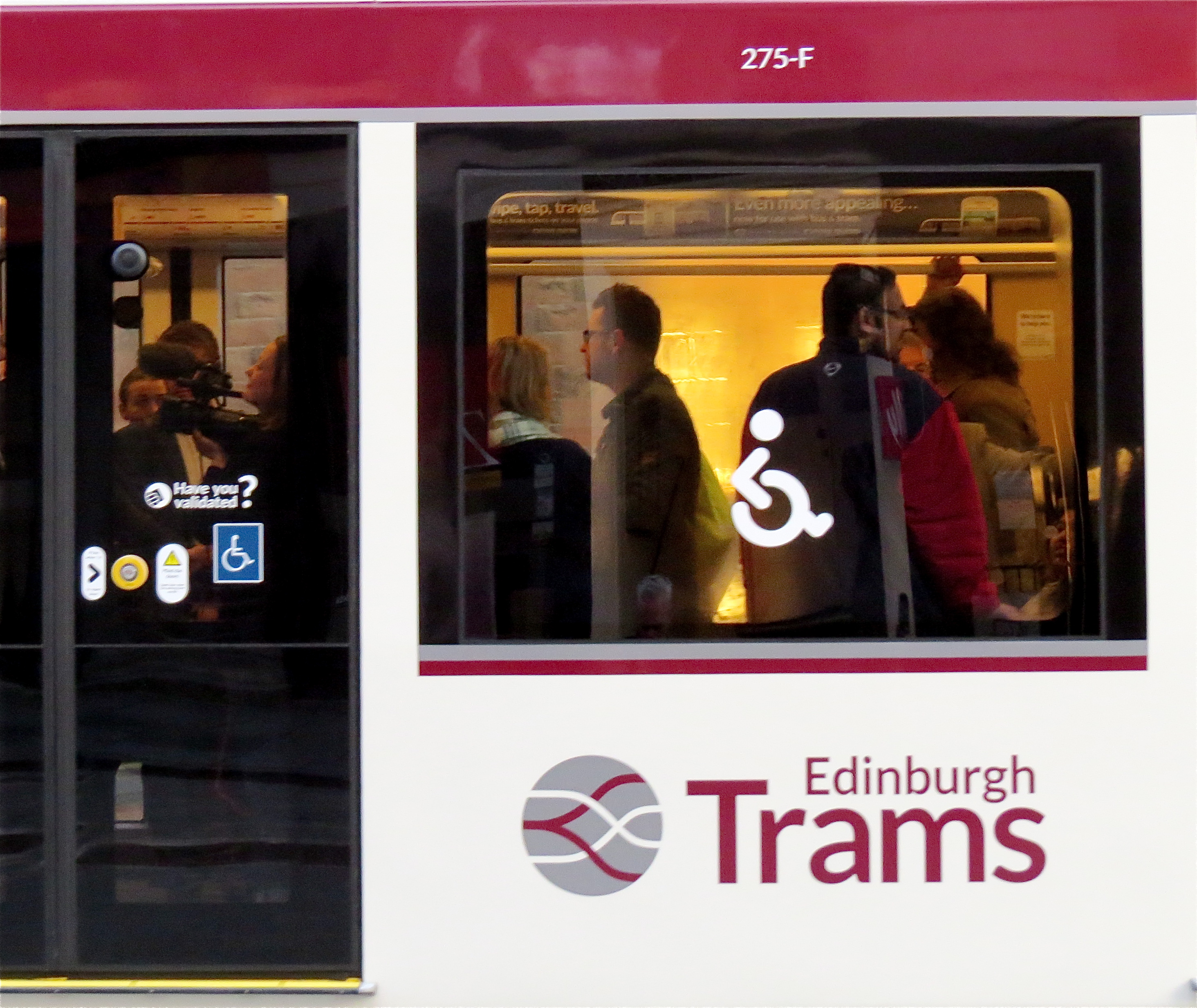
- The problems are being addressed by detailed modifications to the 'Urban Traffic Control' system which should generally improve the flow and reduce the number of times that junctions are set for trams when there are no trams present.
- The Council is also looking at how the situation with traffic turning left from North Bridge onto Princes Street can be improved. Here the tram has exacerbated existing problems with traffic parking outside the Balmoral Hotel and buses stopping outside the Princes Mall.
- Although I didn’t raise this with the Council, in connection with the Sustrans plan to route cars away from Leith Street in favour of buses and cyclists (which as a cyclist I would welcome), I wonder how cars would get from Picardy Place to the Bridges? Routing them via the east end of Princes St would seem optimistic.
One point the Council didn’t bite on: Would reinstating centre doors on buses reduce congestion by speeding up loading and unloading times?
For all the gory details, read on ...
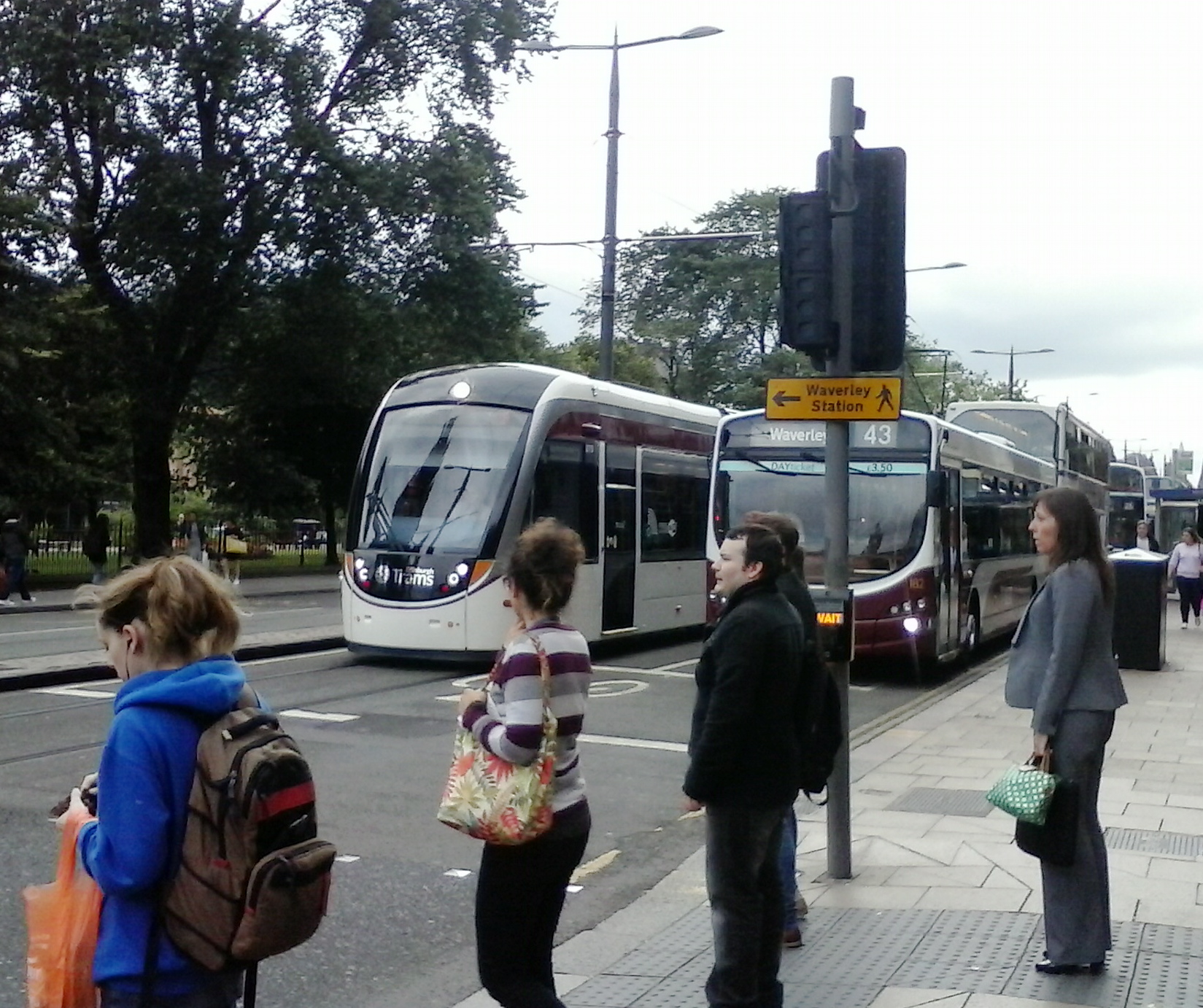
My comment left on Councillor Burns's blog explains the problem:
I've noticed that the tram signals don't seem to be running optimally yet. For example, the tram signals are not set for the tram even though the way ahead appears clear. At the junction from Princes Street to St Andrew Sq last week, I saw an entire tram phase wasted: the tram signal set to 'go', but no tram there, and traffic waiting to turn into Waverley Bridge. Once the traffic moved, the tram which had been waiting at St David Street moved along, but was blocked by traffic still waiting to turn into Waverley Bridge.
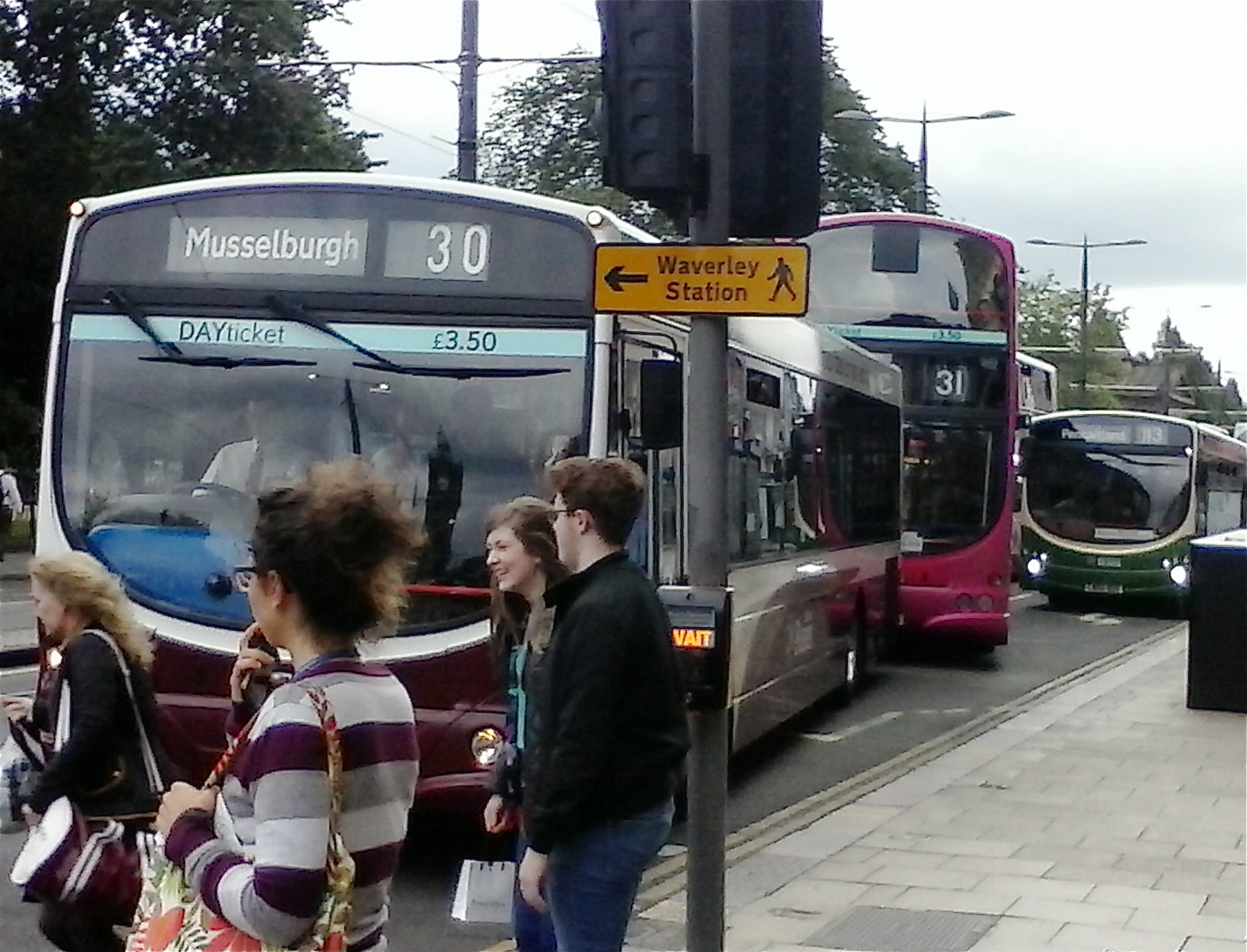
Also, buses not able to pull into stops properly caused problems and there did seem to be some tourist coaches on Princes Street which I wondered whether were strictly necessary.
I also note that there seems to be more congestion than usual at the bottom of North Bridge, with traffic turning left into Princes Street in particular having to wait a long time.
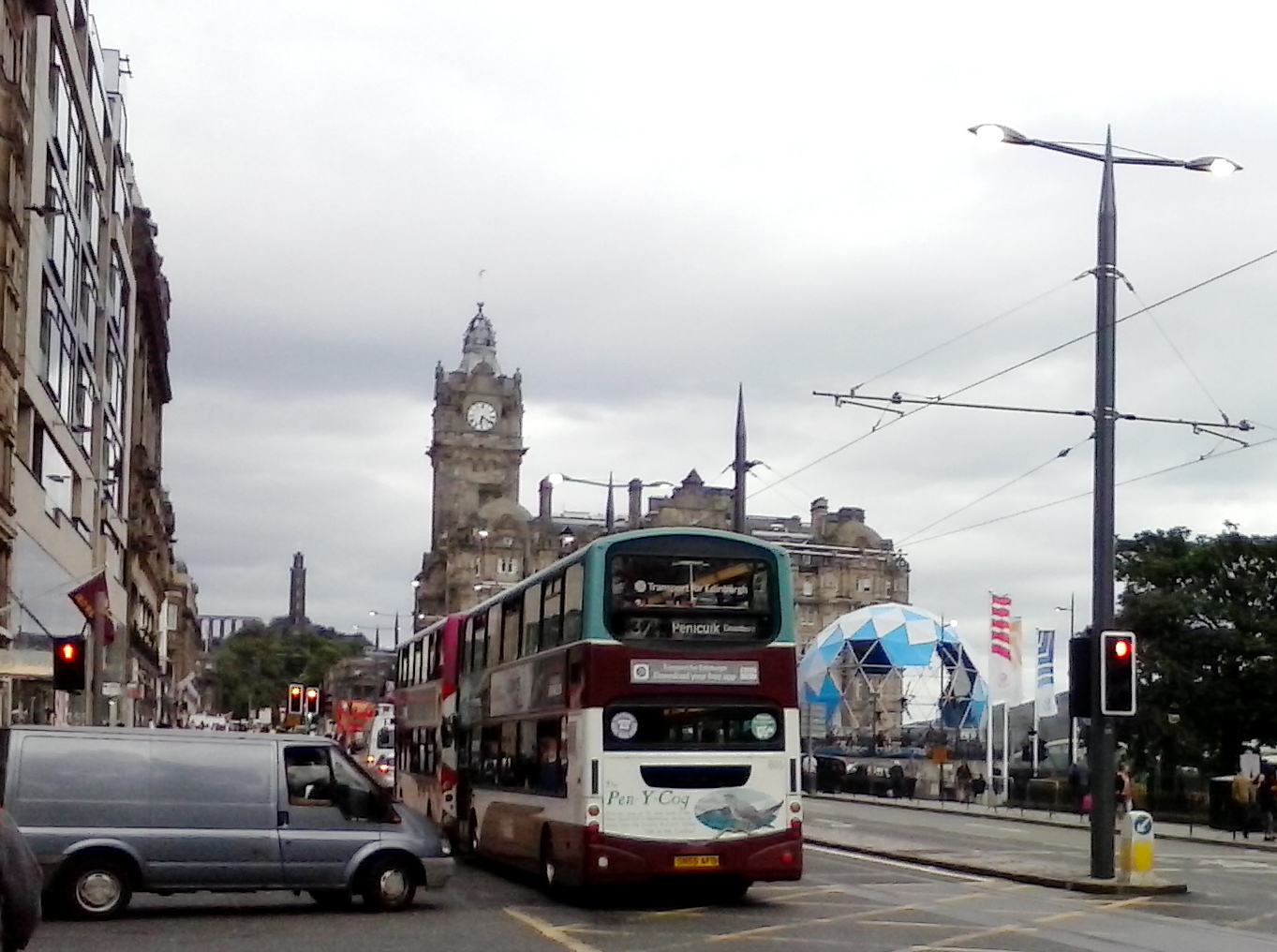
The next week I had a response from Traffic and Engineering manager Cliff Hunt:
As part of bringing the tram into operational service the Council have been working through a process of reviewing the operation of each of the traffic signal junctions along the route to ensure the interface with tram vehicles minimises disruption and delay to all users, inclusive of public transport, cyclists, pedestrians and general traffic. There will unfortunately be instances where some delay is experienced as the tram signal operating system comes into place alongside the existing Urban Traffic Control (UTC) system used to strategically coordinate traffic flow within the city centre.
We are continuing to monitor and ‘fine tune’ these parallel systems moving forward, to ensure the interface with tram vehicles minimises disruption and delay to all users. Our transport service which monitors, maintains and manages the UTC system throughout the city is working closely with Edinburgh Trams to identify any problem areas along the route of the tram as noted by the Tram Operator in order to optimise this.
For your information, the tram is provided with a priority facility as it approaches each of the traffic signal installations on its route. This provides an advance ‘demand’ for the appropriate tram stage to allow the tram to proceed through the junction with minimal delay. However if there is an obstruction (vehicle) on the tram track the tram will not reach the signal and delays will be experienced.
For the majority of the day trams, buses, taxies, coaches, private cars and cyclists all interact safely and without causing congestion, however, unfortunately in the morning and evening peak periods the collective traffic demand is greater that the available capacity. As such there can be occasions when the tram’s progress is impeded due to poorly positioned vehicles, ‘blocked’ junctions etc. We will continue to monitor and make improvements which are within our control as noted above unfortunately a main component of this can relate to driver behaviour (vehicles parked across junctions etc) which is outwith our control.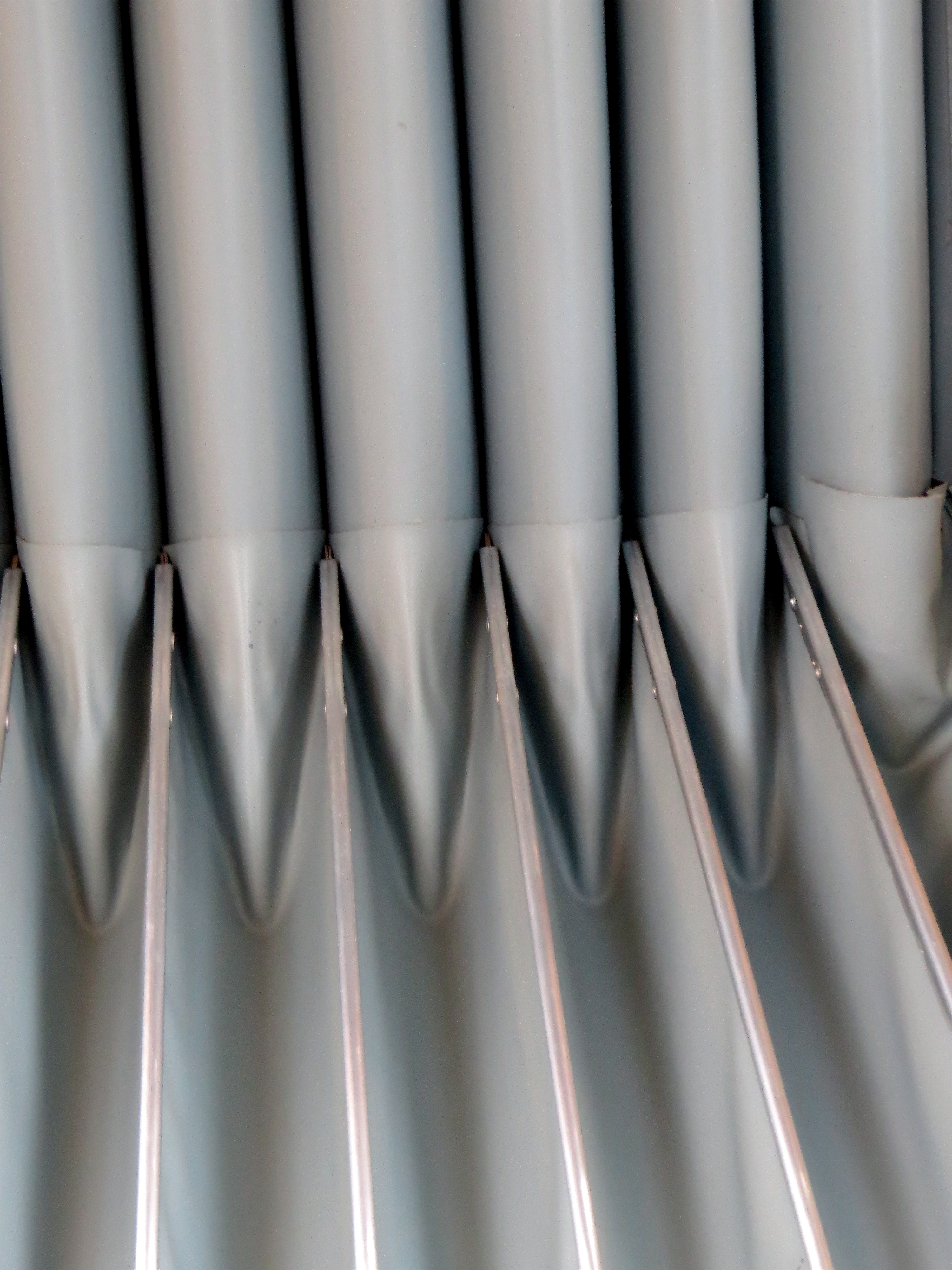
In relation to Mr Sterratt’s point relating to North Bridge this area can be impacted by a combination of parking outside the Balmoral Hotel and buses queuing to the bus stops at Waverley Steps. These were pre-existing constraints however the addition of trams has further restricted road space in this area and thus exacerbated this. We are looking at ways into how this could be improved.
Can parallel traffic stystems be integrated?
I was pleased with the response. The Council is clearly aware of the problem and working on it – but I did have a query: Could the the parallel Urban Traffic Control system and the tram signal operating system be integrated so that tram signals won't be activated by oncoming trams if there is an obstruction on the tram track? Cliff Hunt's colleague Paul Tucker responded on the same day:
Hopefully I can clarify the situation with the 2 systems we have that are controlling the traffic and the trams.
Our UTC system monitors and controls about a third of the installations in the City. That's about 200 traffic signals. The Council has had this system in place for about 15 years and we constantly make changes to it due to incidents, accidents, etc. The UTC computer has two distinct operating modes, SCOOT and Fixed time UTC. I won't go into what SCOOT is, but we use this on the radial routes around the City. The installations in the very centre of the City are operated on fixed time plans and this is due to their proximity to each other to enable the best progression through each route.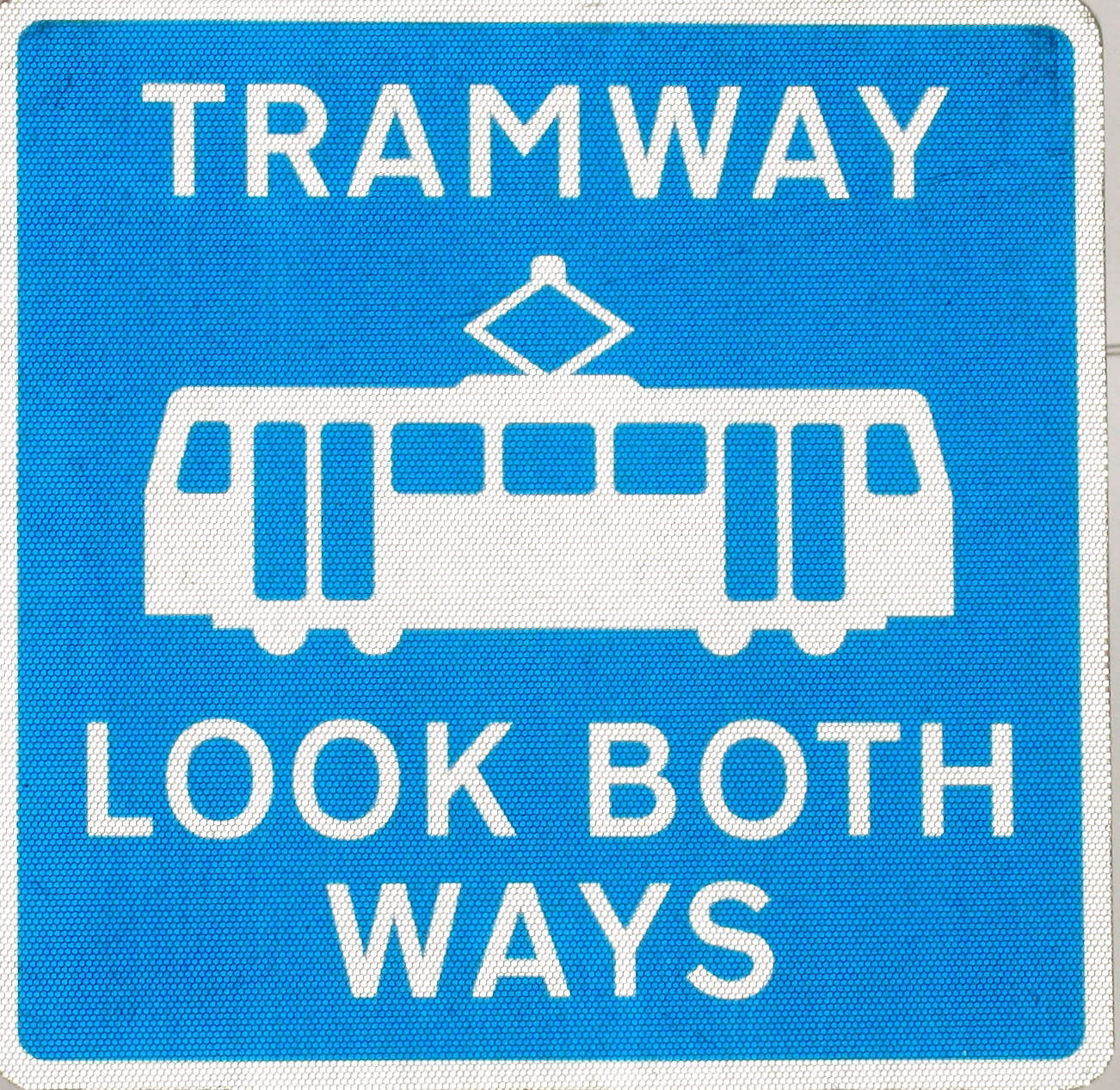
We were aware that this type of system has been used to control trams in other cities such as Nottingham, who do have a very similar system, but the tram route through that City is a very different animal. Therefore we investigated other more intelligent systems that we could integrate with our own UTC system. The system we are now installing is that system. It does not work in parallel with the UTC, but 'nudges' it in the correct direction so that the junction is ready for a tram and then can recover as quickly as possible before another tram arrives. The main advantage of this system is that it reduces the instances where stages are skipped to service the tram. Something that we know is frustrating to everyone.
We have implemented the system at Waverley Bridge and Haymarket and we are very pleased with the results so far, although there is still some tweaking yet to be carried out.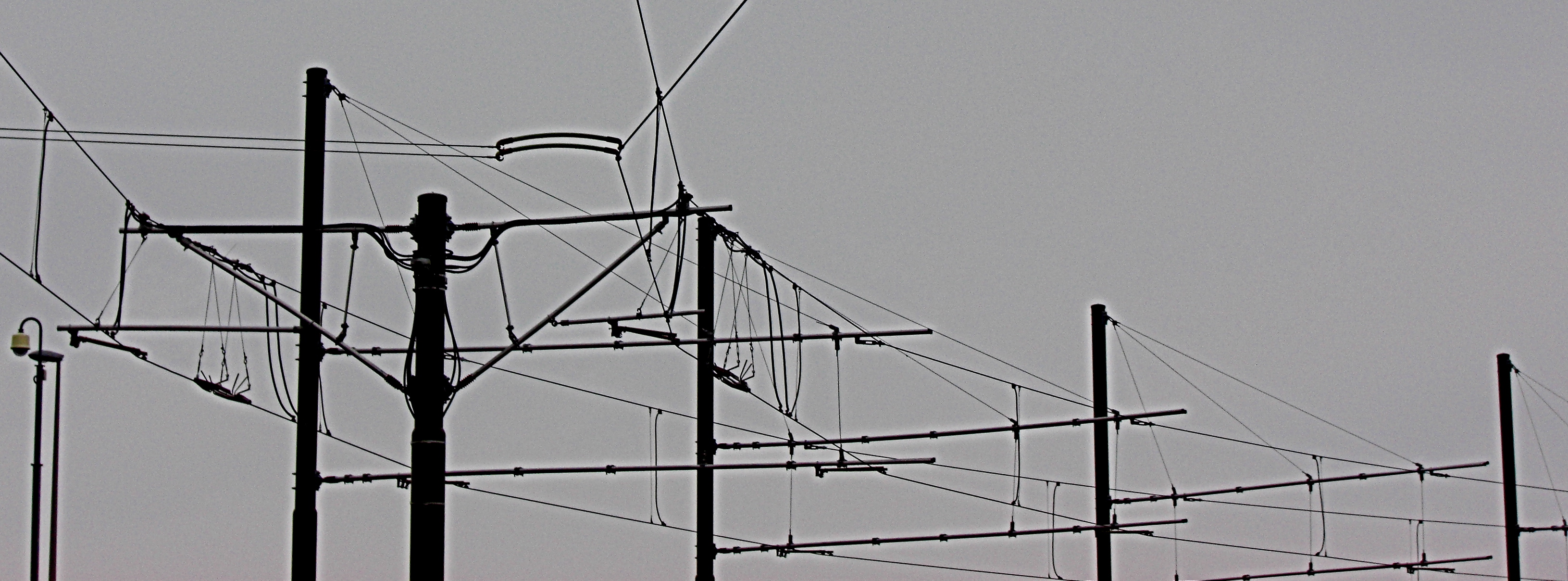
As to your query regarding an obstruction on the tram track, I don't know of any way that this could be detected. I only wish there was. Instead what the specialist installer has done, is create a set of logical conditions. If the tram doesn't reach a certain point within a certain time then the system will try and run other non tram stages and then return to the tram stage when the tram reaches the relevant position. The standard time a junction is held for tram is 90 seconds, which is quite a long time if nothing is moving. Therefore we have already seen an improvement in this respect.
Getting around obstructions
In response, I wondered whether the obstruction detection problem could be got around by setting up a mechanism for tram drivers to activate the signals when they could see the line ahead was clear (or alternatively to repress the signals if the line was blocked). Paul Tucker replied:
As to the your query regarding tram signal activation by the tram driver, this is already in place. If a tram misses its signal, the tram driver has the option of contacting tram control and requesting a proceed signal. We have installed a UTC terminal at tram control, which gives them very basic control over the junctions on the tram route. Therefore during those times when our traffic control room isn't manned, they are able to force the tram stage as a last resort. Under normal conditions the detection on the tram route should automatically re-insert a demand for the tram.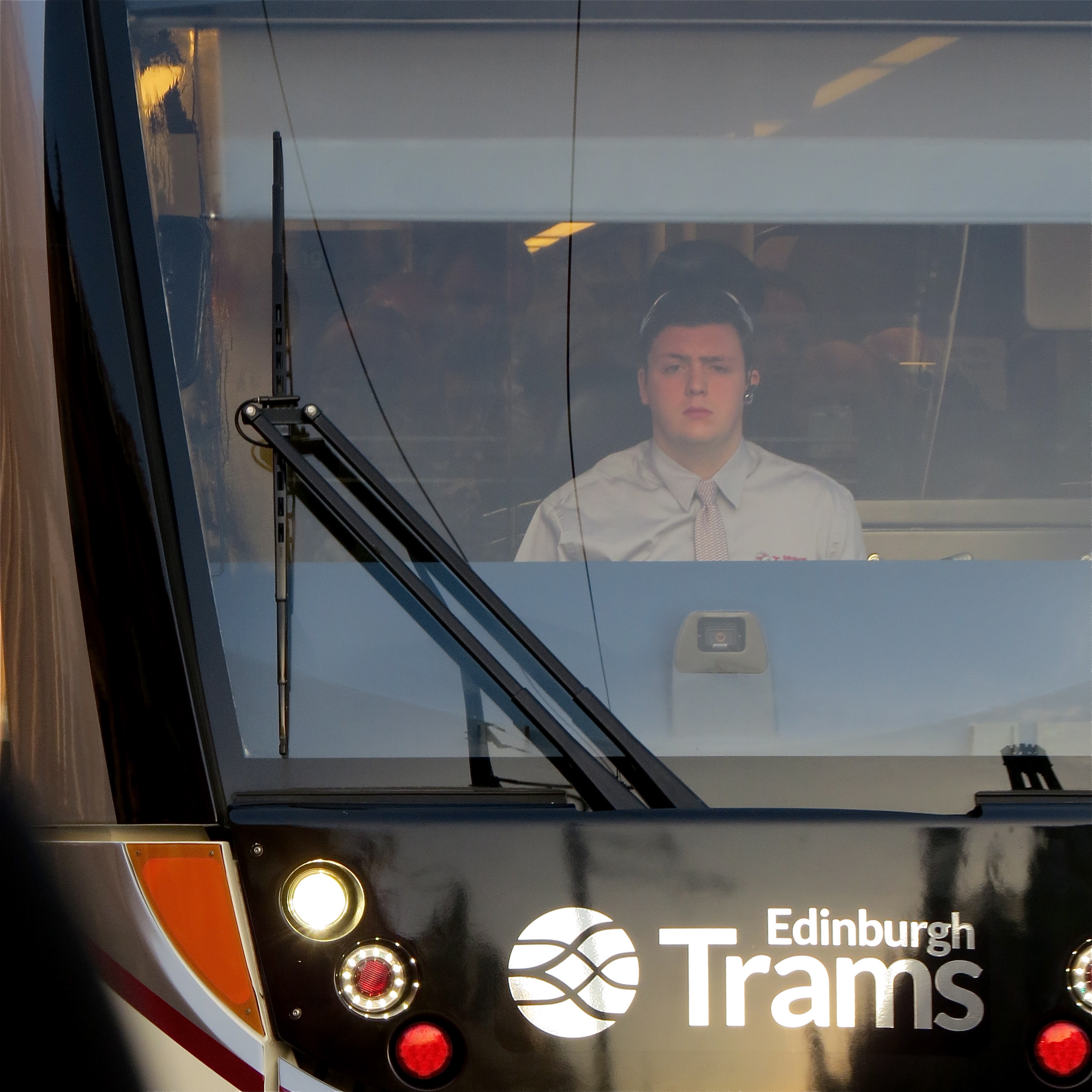
My appetite for more details was now fully sated!
--------------------
@theSpurtle @EdinburghTrams @LAHinds Many thanks for the link, and the constructive feedback - much appreciated, Andrew.
@theSpurtle @AndrewDBurns @LAHinds we need a 1980's style time and motion study to see if single doors on busses causing delays on leith str
@theSpurtle @AndrewDBurns @EdinburghTrams @LAHinds I read in your article that we have parallel systems. What happened to integrated?
@theSpurtle @AndrewDBurns @EdinburghTrams @LAHinds Reply from Andrew Burns pic.twitter.com/p7ez4oMDUS

 Motivation @Motivationprobs 2h
Motivation @Motivationprobs 2h
@theSpurtle @AndrewDBurns @EdinburghTrams @LAHinds It's not outwith your control. It's a council owned company. pic.twitter.com/MOdrxTSI8c

 Motivation @Motivationprobs 2h
Motivation @Motivationprobs 2h
@theSpurtle @AndrewDBurns @EdinburghTrams @LAHinds Quote from Lesley Hinds pic.twitter.com/q6grId4tBV
 Motivation @Motivationprobs 2h
Motivation @Motivationprobs 2h
@theSpurtle @AndrewDBurns @EdinburghTrams @LAHinds I asked Leslie Hinds about this over a month ago. No reply. pic.twitter.com/QxUtXeFrK6
 Motivation @Motivationprobs 2h
Motivation @Motivationprobs 2h
@theSpurtle @AndrewDBurns @EdinburghTrams @LAHinds Council owned company but outwith your control? pic.twitter.com/eIJgMm4AfG

 Motivation @Motivationprobs 2h
Motivation @Motivationprobs 2h
@theSpurtle @AndrewDBurns @EdinburghTrams @LAHinds picture from Paul @fountainbridge pic.twitter.com/GpRsJSxW2e


